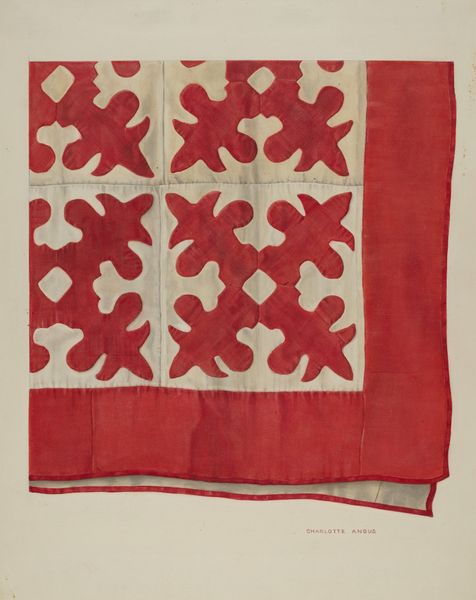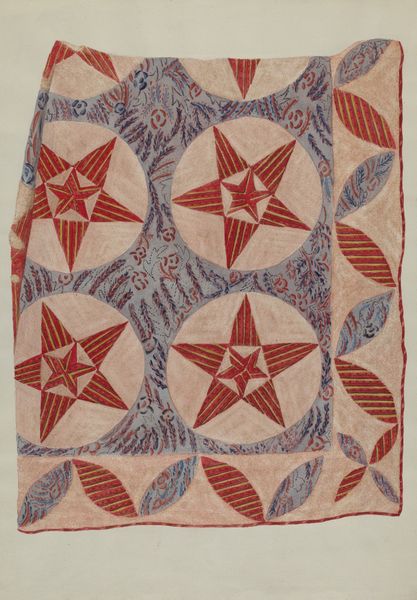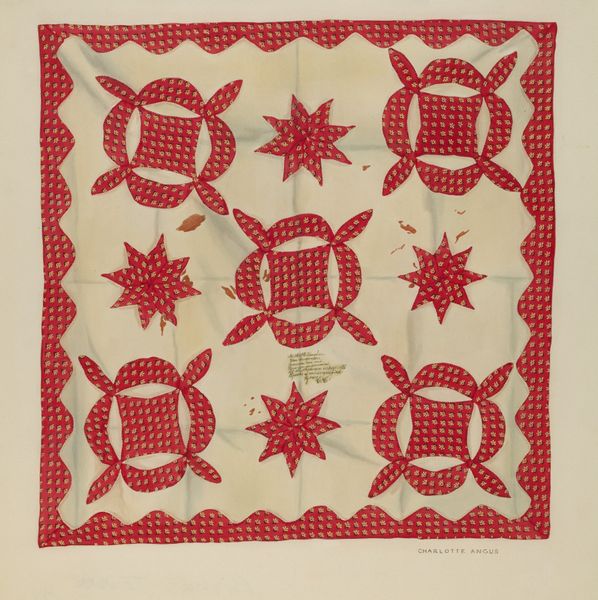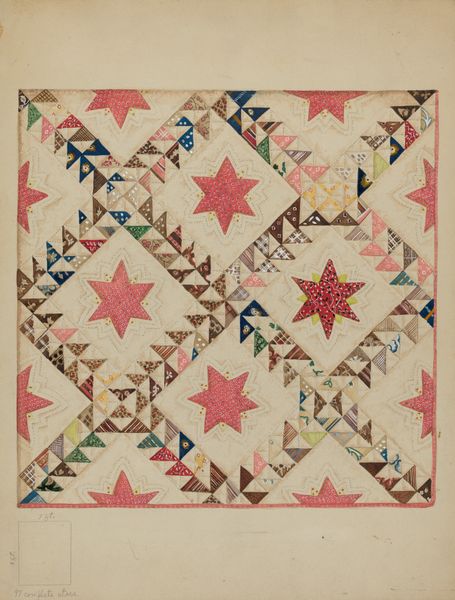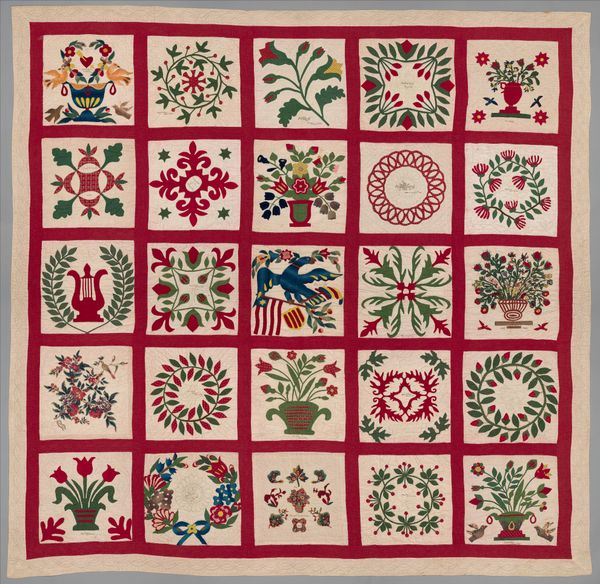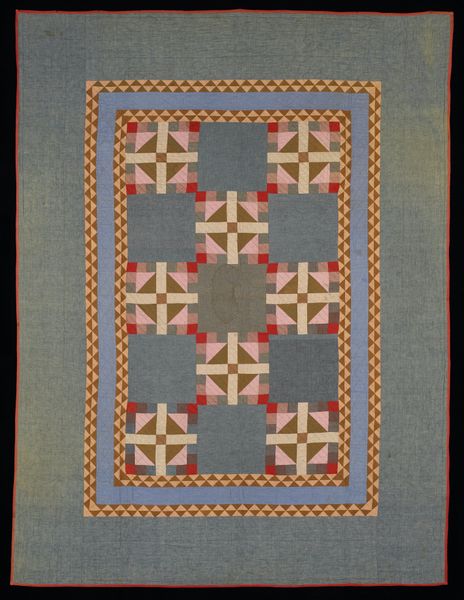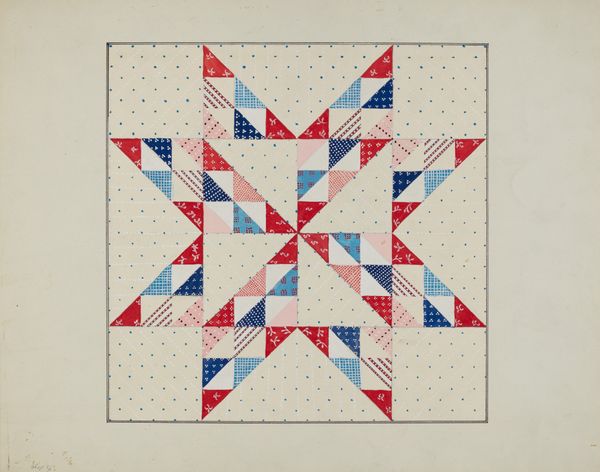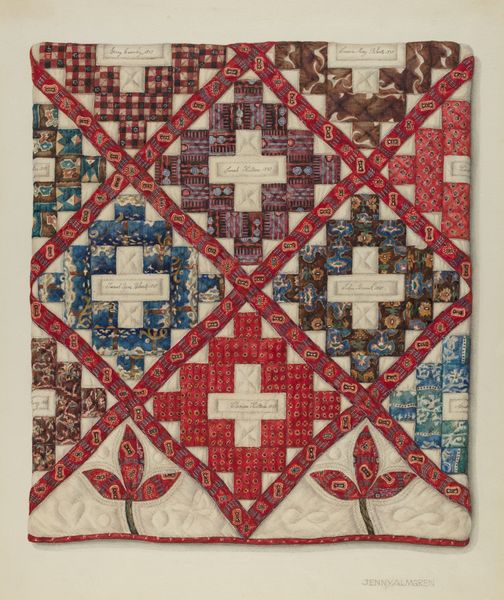
fibre-art, textile, cotton
#
pattern heavy
#
fibre-art
#
textile
#
repetitive shape and pattern
#
folk-art
#
organic pattern
#
geometric
#
repetition of pattern
#
vertical pattern
#
pattern repetition
#
cotton
#
decorative-art
#
layered pattern
#
funky pattern
#
combined pattern
#
repetitive pattern
Dimensions: 85 13/16 x 75 1/8 in. (217.96 x 190.82 cm)
Copyright: Public Domain
Curator: Looking at this LeMoyne Stars quilt, likely crafted between 1880 and 1890, the overall impression is a feeling of constrained joy. The geometric rigor somehow amplifies rather than diminishes its visual power. Editor: It does strike me as almost severe. The intense repetition, the starkness of the red, white, and blue cotton… it’s quite imposing. I’m immediately thinking of the labor that went into creating this meticulous object, and how such acts of making transformed raw materials into something of significance. Curator: Exactly! I read this textile as speaking to themes of identity, particularly given the prominent use of colors that later became deeply intertwined with American patriotism. And the anonymous nature of its maker begs the question, "Whose history are we really seeing represented here?" The act of quilting has often been overlooked within official accounts of art history, and yet, it held huge social and political importance. Editor: It speaks to ingenuity born from necessity, I believe. It represents how cloth remnants could be repurposed and the skills needed, passed down often through generations. Each stitch carries within it this potential history, from the fields where the cotton was grown, to the markets where the fabric was sold, to its final purpose in daily lives. How does its placement within an art institution alter that intrinsic social narrative? Curator: By elevating it from utilitarian object to artwork, we create the space for these questions. What does it mean for traditionally undervalued domestic craft to find its place within our institutionalized notions of value? Is it folk art, or is that just another construct that reinforces an outdated canon? Editor: Absolutely, and perhaps its presence encourages us to reconsider where and how the divisions between "high art" and the everyday collapse. After all, a quilt served not just aesthetic purpose but also profound functional and communal roles within society. Curator: And so by deconstructing the systems that govern what we recognize as "Art" and investigating the conditions of its production and consumption, as this beautiful quilt does, perhaps we make room for wider, more nuanced perspectives. Editor: I agree, by considering process and context, and by questioning entrenched values, we allow more equitable voices and material narratives to rise to the surface. The experience makes you question what you think art is and what materials mean when combined with labour.
Comments
minneapolisinstituteofart about 2 years ago
⋮
Pieced quilts, such as this, require fabric components that are uniform in shape and size. Variations can distort the overall design. To ensure standardization, quilters often use templates to cut fabric pieces accurately. In the late 1800s, templates were cut from sheets of tin or paper. Today, they are often made from plastic. The LeMoyne Star pattern was, and still is, widely used throughout much of the United States. LeMoyne stars have eight points composed of diamond-shaped pieces of fabric. By alternating red and blue fabric, the quilter made these stars look like pinwheels in motion.
Join the conversation
Join millions of artists and users on Artera today and experience the ultimate creative platform.
